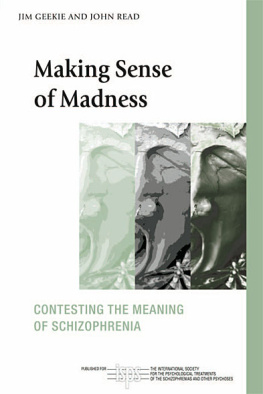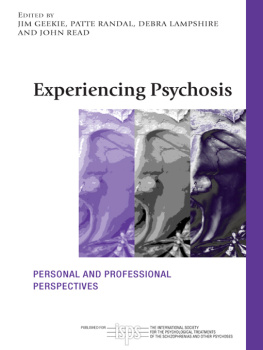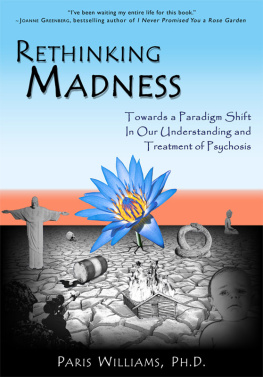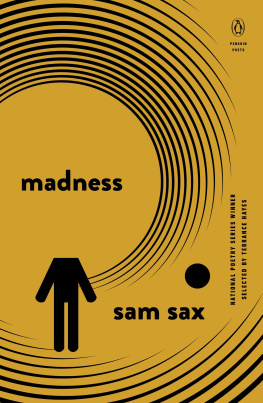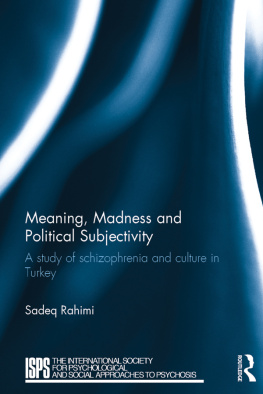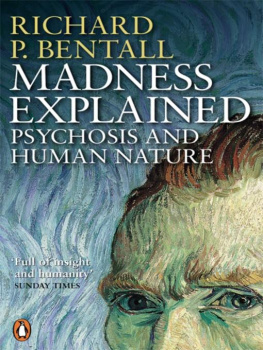First published 2009
by Routledge
27 Church Road, Hove, East Sussex BN3 2FA
Simultaneously published in the USA and Canada
by Routledge
270 Madison Ave, New York, NY 10016
Routledge is an imprint of the Taylor & Francis Group, an Informa business
This edition published in the Taylor & Francis e-Library, 2009.
To purchase your own copy of this or any of Taylor & Francis or Routledges collection of thousands of eBooks please go to www.eBookstore.tandf.co.uk.
2009 Jim Geekie and John Read
Paperback cover design by Hybert Design
All rights reserved. No part of this book may be reprinted or reproduced or utilized in any form or by any electronic, mechanical, or other means, now known or hereafter invented, including photocopying and recording, or in any information storage or retrieval system, without permission in writing from the publishers.
This publication has been produced with paper manufactured to strict environmental standards and with pulp derived from sustainable forests.
British Library Cataloguing in Publication Data
A catalogue record for this book is available from the British Library
Library of Congress Cataloging in Publication Data
Geekie, Jim, 1961
Making sense of madness : contesting the meaning of schizophrenia / Jim Geekie & John Read.
p. cm.
1. Schizophrenia. 2. Psychoses. I. Read, John, Dr. II. Title.
RC514.G434 2009
362.26dc22
2008046664
ISBN 0-203-87842-6 Master e-book ISBN
ISBN13: 978-0-203-87842-2 Master e-book ISBN
ISBN13: 978-1-134-04336-1 ePub ISBN
ISBN: 9780415461955 (hbk)
ISBN: 9780415461962 (pbk)
Chapter 1
Introduction
As this is, in many ways, a book about stories, we have decided that we should begin this book with a story. A true story.
A young mother sits at home every night thinking about her predicament. Her two boys, aged 2 and 5, are asleep, and her husband is out working night shift in a coal mine. He wont be back until early the next morning. Shes preoccupied with how her life has been going recently, and finds she thinks about nothing else once the kids are in bed. Night after night after night, she returns to the same old issues, the same old questions, and finds she reaches the same old dead-ends in looking for answers.
As the weeks pass, the content of her thoughts remains much the same, but the way in which she thinks about her situation starts to change. It moves from being an internal monologue to being an external dialogue. She finds that instead of having her thoughts running around in endless circles in her mind, she is now having a discussion with her own head, which has somehow, miraculously she thinks, started to appear in the top corner of the bedroom, looking down on her, talking to her and contributing ideas and suggestions about ways of dealing with her current circumstances. Her head appears pretty much every night, and she finds that the discussions she has with her head are more fruitful than just having the thoughts running around in her mind.
After some months of these nocturnal discussions, the young mother and her disembodied head together find a solution. Its simple: she just has to kill herself. That now seems fairly straightforward to her. However, this in itself creates another problem: what to do with the children? It would be cruel to leave them behind. Indeed, she would find it impossible to do so given the circumstances. The solution to this dilemma also develops out of the dialogue the young woman has with her head. Again, its a simple and obvious solution. She will kill her two children first, then shell kill herself, thus ensuring that they all escape and that the kids are not left behind to face the situation on their own.
It seems so clear and simple, yet something about it does not sit easily with the young woman. Somehow it just doesnt feel right. She decides to go to see her family doctor, hoping theres something he might be able to do that will prevent her ending her own and her childrens lives. She decides not to start off by telling him about the discussions shes been having with her head. Instead, she begins by talking about another problem shes been having. She believes shes been walking in a strange way, with her body leaning over to one side. She told her family, but they dismissed her concerns, saying she walks just fine. She believes they are lying, for some reason deliberately hiding something from her. She tells the doctor about her walk and he responds, not surprisingly, by asking her to walk around the surgery. The doctor sees nothing remarkable about her way of walking and tells her so. She believes the doctor is in cahoots with her family. The doctor senses the young woman is troubled, and, this being the early 1960s, he gives her a prescription of phenobarbitone, which she never actually uses. Shes seeking help, but shes been distrustful of medicine ever since she was offered, and refused, thalidomide while pregnant with her second child. The doctor, clearly of the opinion that the young woman is mentally unwell, then tells her that if she doesnt stop thinking this way, hell have to send her off to the mental hospital to see a psychiatrist. The woman experiences this as a veiled threat, becomes more frightened, and decides wisely, we might think to say no more about her difficulties. The doctor hears nothing about her conversations with her head.
The young woman doesnt kill herself, nor does she kill her children. Instead, she decides to leave her husband, a task which proves far from easy as she has few other supports. After leaving her husband, she finds that, in time, the discussions with her head cease, and she no longer feels that shes leaning over to one side when walking.
The above story is one which confronts us with a number of important questions and many of the issues which we hope to explore in this book. What are we to make of this womans experience? Is she mad? Does she have a mental illness? Does she need help? What kind of help? We might also ask about her children. Are they safe? Is she safe? We might also wonder what she herself makes of her difficulties seeing as she is clearly troubled by them. Some of these questions are rather academic at this point in time, given that the events took place in the 1960s, and the woman and her now grown-up children are safe and well. She no longer has experiences of such intensity, which would cause us to have concerns about her, or anybody elses safety. She has never received any input from mental health services. However, although these events happened quite some time in the past, we can still fruitfully consider the question of what we are to make of this womans story. While her story is, of course, unique in its details, it also has elements which it shares with other peoples experiences and, as such, the question of what we make of these stories has ongoing relevance.
First, lets consider the womans relationship with her family doctor. She feared that if she had told him her whole story, he would have viewed her as insane, and treated her accordingly, most likely by sending her off to the mental hospital. In this respect, she is almost certainly correct. Her story can be construed from a clinical perspective, where we find a vast literature aimed at investigating, making sense of, and treating experiences of this nature. From this position, which, for our purposes, we are assuming her doctor would have upheld, her experiences are indeed seen as indicative of a mental illness. Using medical terminology, we would say she was experiencing psychosis: hallucinations of a visual and auditory nature along with delusional ideas about her way of walking and her family conspiring to hide things from her. Both at that time in the 1960s and in the present day, she would, in all likelihood, receive a diagnosis of schizophrenia were she to share her experiences with her doctor. Given the apparent risk issues, where her own and her childrens safety seemed of concern, she would, as she feared, have been hospitalized and, both then and now, medication would have been the mainstay of the treatment she received.

